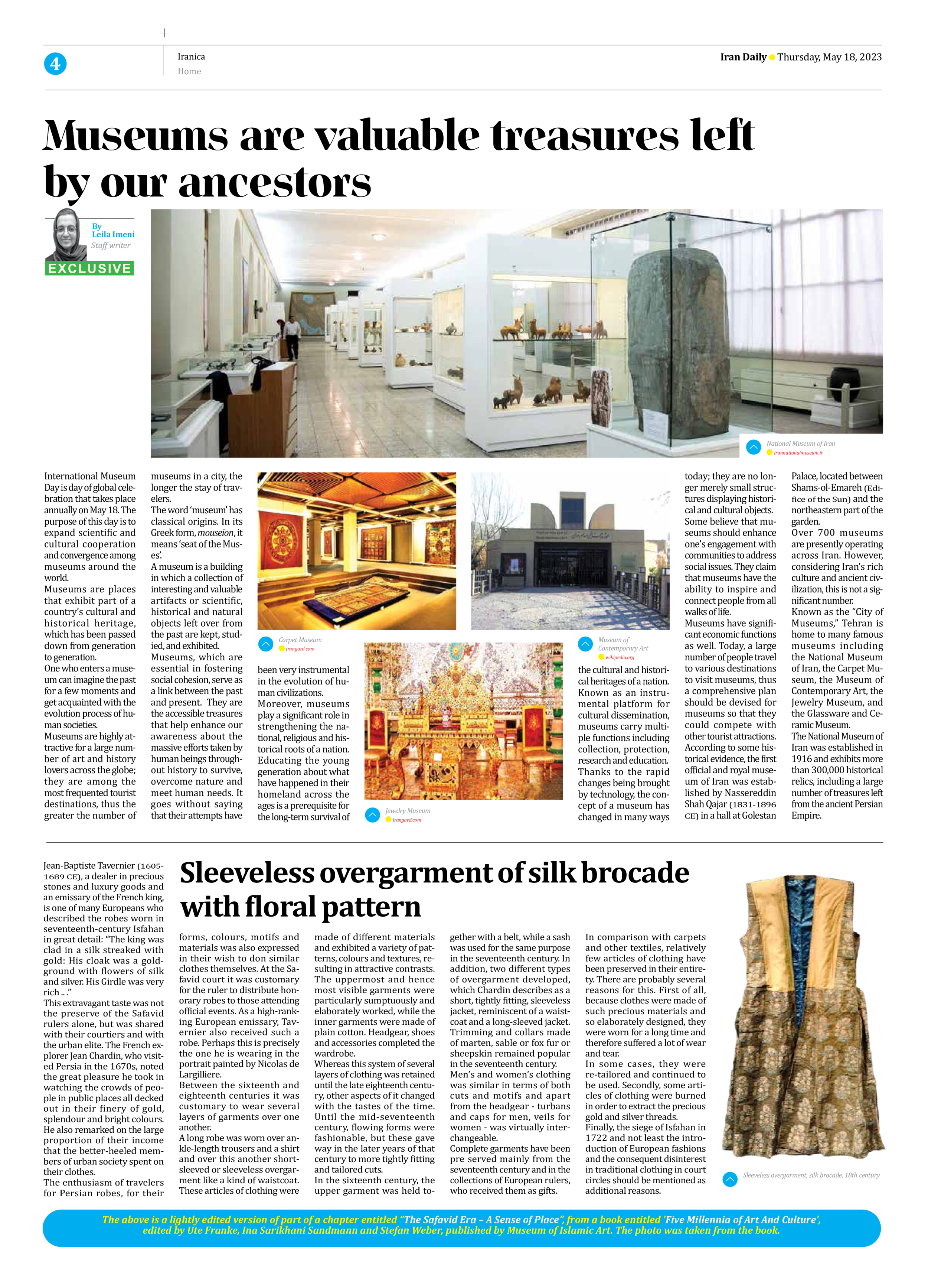
Museums are valuable treasures left by our ancestors
By Leila Imeni
Staff writer
International Museum Day is day of global celebration that takes place annually on May 18. The purpose of this day is to expand scientific and cultural cooperation and convergence among museums around the world.
Museums are places that exhibit part of a country’s cultural and historical heritage, which has been passed down from generation to generation.
One who enters a museum can imagine the past for a few moments and get acquainted with the evolution process of human societies.
Museums are highly attractive for a large number of art and history lovers across the globe; they are among the most frequented tourist destinations, thus the greater the number of museums in a city, the longer the stay of travelers.
The word ‘museum’ has classical origins. In its Greek form, mouseion, it means ‘seat of the Muses’.
A museum is a building in which a collection of interesting and valuable artifacts or scientific, historical and natural objects left over from the past are kept, studied, and exhibited.
Museums, which are essential in fostering social cohesion, serve as a link between the past and present. They are the accessible treasures that help enhance our awareness about the massive efforts taken by human beings throughout history to survive, overcome nature and meet human needs. It goes without saying that their attempts have been very instrumental in the evolution of human civilizations.
Moreover, museums play a significant role in strengthening the national, religious and historical roots of a nation. Educating the young generation about what have happened in their homeland across the ages is a prerequisite for the long-term survival of the cultural and historical heritages of a nation.
Known as an instrumental platform for cultural dissemination, museums carry multiple functions including collection, protection, research and education.
Thanks to the rapid changes being brought by technology, the concept of a museum has changed in many ways today; they are no longer merely small structures displaying historical and cultural objects.
Some believe that museums should enhance one’s engagement with communities to address social issues. They claim that museums have the ability to inspire and connect people from all walks of life.
Museums have significant economic functions as well. Today, a large number of people travel to various destinations to visit museums, thus a comprehensive plan should be devised for museums so that they could compete with other tourist attractions.
According to some historical evidence, the first official and royal museum of Iran was established by Nassereddin Shah Qajar (1831-1896 CE) in a hall at Golestan Palace, located between Shams-ol-Emareh (Edifice of the Sun) and the northeastern part of the garden.
Over 700 museums are presently operating across Iran. However, considering Iran’s rich culture and ancient civilization, this is not a significant number.
Known as the “City of Museums,” Tehran is home to many famous museums including the National Museum of Iran, the Carpet Museum, the Museum of Contemporary Art, the Jewelry Museum, and the Glassware and Ceramic Museum.
The National Museum of Iran was established in 1916 and exhibits more than 300,000 historical relics, including a large number of treasures left from the ancient Persian Empire.







